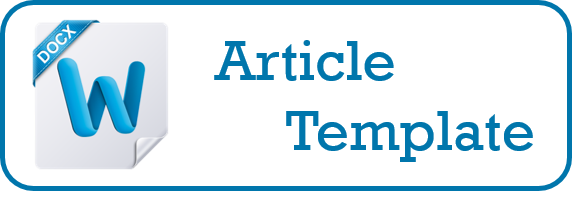KARAKTERISTIK KEWIRAUSAHAAN MAHASISWA FAKULTAS EKONOMI UNIVERSITAS YARSI
Abstract
This study examines to capture a description of entrepreneurial characteristics owned by students of the Faculty of Economics, University of YARSI. As a reference, this study uses seven entrepreneurial characteristics formulated by Bezzina (2010), namely: Need of Achievement, Internal Locus of Control, Ambiguity Tolerance, Self-Confidence, Creativity or Innovativeness, Risk-taking Propensity, and Self-sufficiency or Freedom. Furthermore, this research uses quantitative descriptive method to get an idea to what extent entrepreneurial characteristics mastered by students of the Faculty of Economics, University of YARSI.Questionnaires distributed to 150 respondents consist of alumni and active students who have received Entrepreneurship courses, both from Accounting and Management major. In general, the entrepreneurial characteristics in the Faculty of Economics YARSI University is classified Medium, but there are two dimensions that fall into High category, which are Need of Achievement and Self-confidence. The finding also showed that male respondents had higher entrepreneurial characteristics than female respondents. In addition, Management students also had better characteristics than Accounting’s, while the alumni’s entrepreneurial characteristics are more developed than the active students.Downloads
Published
Issue
Section
License
Proposed Policy for Journals That Offer Open Access
This work is licensed under a Creative Commons Attribution-ShareAlike 4.0 International License (CC BY-SA 4.0).
Authors who publish with Journal of Economics and Business Aseanomics (JEBA) agree to the following terms:
1. For all articles published in Journal of Economics and Business Aseanomics (JEBA), copyright is retained by the authors. Authors permit the publisher to announce the work with conditions. When the manuscript is accepted for publication, the authors agree to the publishing right's automatic transfer to the publisher.
3. Authors retain copyright and grant the journal right of first publication with the work simultaneously licensed under a Creative Commons Attribution-ShareAlike 4.0 International License (CC BY-SA 4.0) that allows others to share the work with an acknowledgment of the work's authorship and initial publication in this journal.
4. Authors can enter into separate, additional contractual arrangements for the non-exclusive distribution of the journal's published version of the work (e.g., post it to an institutional repository or publish it in a book), with an acknowledgment of its initial publication in this journal.
5. Authors are permitted and encouraged to post their work online (e.g., in institutional repositories or on their website) before and during the submission process, as it can lead to productive exchanges and earlier and greater citation of published work (See The Effect of Open Access).

 Anis Byarwati
Anis Byarwati
















